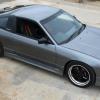Hsv More Fun....?
Announcements
-
Similar Content
-
Latest Posts
-
By PotatoCake · Posted
Dont disrespect family, otherwise swat will you know... Yeh i still cant wrap my head around 180's going for $50k plus, i still only see them as $3,000 beaters that only broke uni students used to drive -
Absolutely. R34 Sedans with V8's in them are the peak of the platform and should be priced accordingly. Get with the times, people. It's Brian O'Connor + Dom Torreto + FAMILY all in one.
-
By robbo_rb180 · Posted
Cool piece and gone to someone who will use. Can close/delete thread -
They need to get a grip. R32 GTRs got as low as AU$8-10K at one point here.
-
By PotatoCake · Posted
You have just offended every teenage boy in America
-








Recommended Posts